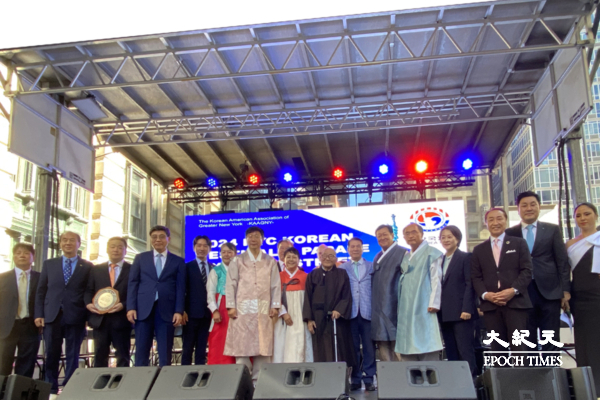The annual New York City Korean Parade & Festival, which began in 1980, returned to Manhattan on October 5th after a hiatus due to the pandemic. Over 50 South Korean community organizations, invited by the Korean American Association of Greater New York (KAAGNY), participated in the parade. The event also featured a market with around 60 booths showcasing Korean culture.
In an interview with the press, KwangSeok Kim, the chairman of KAAGNY, expressed his joy over the grand return of the festival after a four-year pause. He highlighted the significance of the Korean community coming together to celebrate their heritage and contribute to the progress of America. Participants dressed in traditional attire, embodying the essence of Korean culture and unity. Kim remarked, “Our participation in the parade symbolizes our Korean identity, and our community has made significant contributions to the advancement of America. We strive to progress together, not only for our community but for society as a whole.”
WonCheol Choi, the chairman of the 2024 Korean Parade & Festival organizing committee, emphasized the rich display of Korean traditional culture during the event. Beyond the traditional clothing and music showcased in the parade, attendees could also experience traditional Korean activities at the market, such as spinning tops, kicking shuttlecocks, shooting, and pitching marbles. Visitors had the opportunity to don Hanbok (Korean traditional attire) for photos. Choi proudly stated, “We have the chance to showcase Korean traditional culture to the world.”
EuyWhan Kim, the Consul General of Korea in New York, expressed his pride as a Korean citizen witnessing the growth and development of his country. He highlighted the resilience of Korean culture and identity amidst the dominant influence of China in East Asia, emphasizing the importance of maintaining freedom and democracy. Kim hoped that the event would instill a sense of pride among fellow Koreans for their heritage.
Public Advocate of NYC, Jumaane D. Williams, also participated in the Korean Parade & Festival. Williams acknowledged the diversity and vibrancy of American culture, including Korean-American culture. As an immigrant’s son, he understood the significance of the immigrant experience and its contribution to the country.
The event attracted around 60 diverse cultural and commercial organizations to set up booths and participate in the grand parade. Among the sponsors was Hi-Seoul Enterprise under the Seoul Business Agency, which aimed to introduce Korean products to American consumers. The Hi-Seoul Promotion Team’s manager, Hyunhae Park, introduced their initiative to promote Seoul’s small and medium-sized enterprises through the event, showcasing Korean culture and products to the local community in New York.
The event also featured a product display by the Korean Agricultural and Fisheries Marketing Corporation. The representative of the corporation in the Americas noted the popularity of Korean fermented foods like Kimchi in Europe and the US. The export of Kimchi to the US in the first week of October amounted to 9,240 tons, totaling $34.22 million, showing an 11.2% increase compared to the same period last year.

